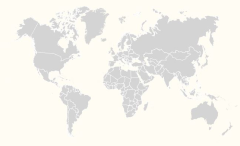Background
Late in 1797 Bass set out in a naval whaleboat manned by six oarsmen provided by the governor of New South Wales. After a 12,000-mile (19,300-km) voyage that took him to Western Port, just east of Port Phillip Bay in present-day Victoria, Bass formed the theory that Tasmania, then called Van Dieman's Land and believed to be part of the mainland, was an island. In 1798, Bass and Flinders proved the theory by circumnavigating the island. Subsequently, Bass made several shorter but valuable survey trips for the governor of the colony. An exceptionally thorough observer, Bass left vivid accurate descriptions of the plants and animals he found on his frequent trips ashore during the voyages. Ill health forced him to give up his naval commission in 1799, and he returned to England, where he married.
Late in 1800 Bass set out again for Australia, this time as a merchant adventurer, but the voyage proved a failure. In 1803, he sailed from Australia for Chile, then part of the Spanish colonial realm, to obtain livestock and supplies with which to found a settlement in New Zealand, and was never reliably reported as having been seen alive again. There were persistent rumors for many years thereafter that Bass had been captured by the Spanish and died a convict in South America, but it is thought most likely that his ship sank in the Pacific.






